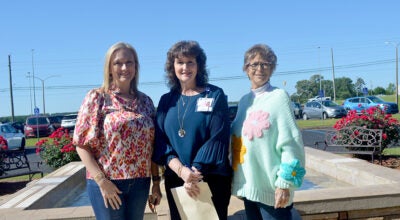TRMC joins trauma system
Published 9:30 pm Thursday, August 21, 2014
Troy Regional Medical Center joined the Alabama Trauma system on Thursday, a move which local doctors say will greatly enhance the ability to quickly treat patients.
“This is a great day for the Alabama Trauma System and for the citizens of our state,” said Dr. William Crawford, EMS Medical Director. “With the activation of Region Five’s trauma centers we now have all of our state operating within the Alabama Trauma System. This should lead to fewer lives lost due to traumatic injuries, along with reduced health care costs and reduced hospital stays due to trauma.”
TRMC is one of 13 hospitals in the Southeast Region that joined the network on Thursday.
Dr. Leonard Nasca, medical director for the TRMC Emergency Department, said under the new network, hospitals and first responders can access a statewide database to determine which trauma centers have the resources available to treat patients, therefore getting patients to the proper center more quickly.
“Whenever you have a trauma, it’s usually best to go to the highest level of trauma center you can,” Nasca said. Trauma centers are ranked on a sliding scale, based on resources available. For instance, a Level 1 center has a neurosurgeon and anesthesiologist on staff at all time, and a Level 2 center has those resources on call and available within 20-30 minutes. TRMC is a Level 3 center.
“With this new network, we can make one call and look at one computer and see the hospitals in the region and what resources are available at each,” Nasca said. “For example, sometimes Baptist Hospital South (in Montgomery) may not have a neurosurgeon on duty, but Southeast Alabama Medical Center in Dothan will, so we can send the patient there.”
Nasca said the goal of the network is to improve response time. “In trauma care the first hour is called the golden hour. It’s the hour when what you do has the most impact on saving a trauma patient’s life,” he said. “This network helps us ensure the patient receives the quickest possible and most appropriate trauma care needed to stabilize vitals and help the patient survive.”
Nasca said the network allows patients to be sent directly to the appropriate trauma center, whenever possible. “Some patients may come to Troy, where we stabilize them and send them on to the higher level trauma centers.”
With 30 years experience in emergency medicine, Nasca said the network’s ability to quickly and efficiently identify available resources will be critical in helping save lives.
“Before we’d have to make several calls to area hospitals to find out what was available,” he said. “Now we have the network and there’s less time wasted on the phone and more time directed to getting the patient where he needs to be.”
The network is operated by the Alabama Department of Public Health and the Office of Emergency Medical Services. A total of 57 trauma centers participate, with 167 ground and two air units in Region Five, and 1,166 ground and 12 air units statewide. In addition, eight out-of-state air units are operating in Alabama. Region Five includes Autauga, Barbour, Bullock, Butler, Coffee, Covington, Crenshaw, Dale, Elmore, Geneva, Henry, Houston, Lee, Lowndes, Macon, Montgomery, Pike and Russell counties.





